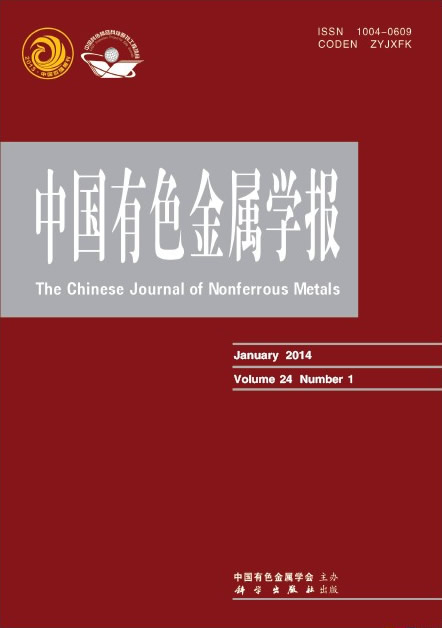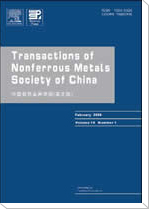(北京工业大学 新型功能材料教育部重点实验室, 北京 100022)
摘 要: 研究了添加La2O3后钼的韧性及其韧化机制。 借助于拉伸、 弯曲方法测定了Mo- La2O3材料的断裂韧性KC和韧-脆转变温度(DBTT), 并用SEM、 TEM、 AES等方法对Mo- La2O3材料的变形、 断裂特征和组织结构进行了分析。 研究结果表明: 烧结态Mo-La2O3材料的KC值达到24.76MPa·m1/2, 是纯钼的2.5倍多, 而且高于热锻空冷态TiC-ZrC-Mo钼合金。 经1900℃退火的Mo- La2O3板, 其韧-脆转变温度降低至-60℃, 较同样状态的纯钼板降低了80℃, 故La2O3对钼具有显著的韧化效果。 AES结果表明, 添加La2O3并不改变C、 N、 O等致脆杂质在钼晶界上的分布状态。 Mo- La2O3材料的韧化主要归因于其抗裂纹扩展能力的提高, 而这与La2O3粒子改变钼中的位错分布及组态有关。 并提出了一种新的韧化机制—硬脆第二相的韧化机制, 能很好解释实验结果。
关键字: 钼;La2O3; 断裂韧性; DBTT; 第二相韧化
(The Key Laboratory of Advanced Functional Materials of Ministry of Education,
Beijing Polytechnic University, Beijing 100022, China)
Abstract: The KC and DBTT of both sintered and recrystallized Mo alloy doped with La2O3 (Mo- La2O3) as well as unalloyed molybdenum were tested and the microstructure was investigated by SEM, TEM and AES. The results show that the KC of Mo- La2O3 alloy reaches to 24.76MPa·m1/2, which is 2.5 times as much as that unalloyed Mo. The DBTT of Mo- La2O3 sheet annealed at 1900℃ for 60min is decreased to -60℃, which is 80℃ lower than that of unalloyed Mo. The Mo- La2O3 alloy has similar equiaxed grain structure with the unalloyed Mo. The AES analysis revealed that the same content of interstitial impurities exist on grain boundaries of Mo- La2O3 and unalloyed Mo. A toughening mechanism was proposed to be that large number of dislocations were pinned around La2O3 particles, shorting the efficient slip length and decreasing the dislocations pile-up on grain boundaries of Mo. The toughness improvement of Mo- La2O3 alloy was attributed to the relax of stress concentration at grain boundaries of Mo- La2O3 alloy and the weaker tendency to intergranular fracture on grain boundaries.
Key words: molybdenum; La2O3; fracture toughness; DBTT; second phase toughening


